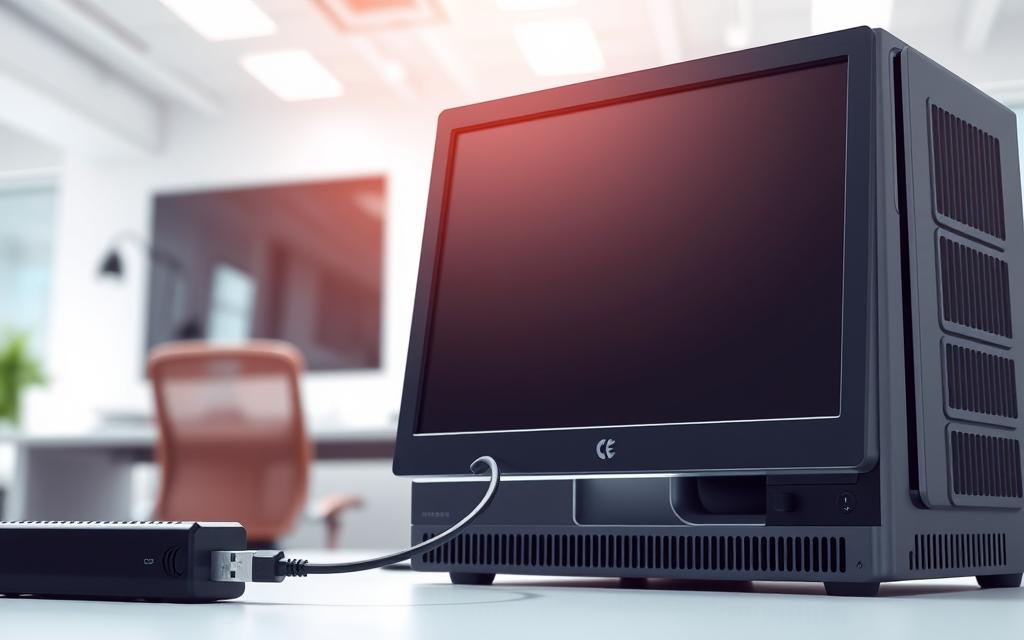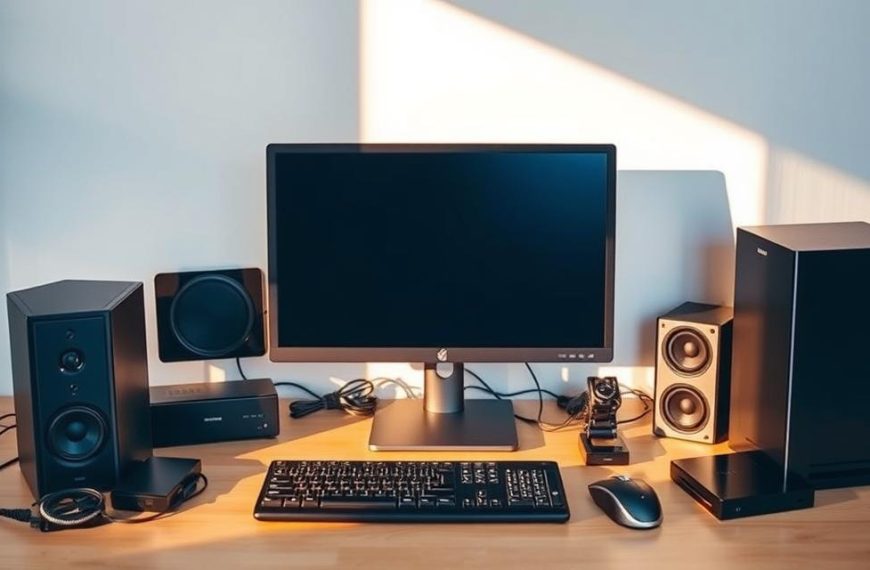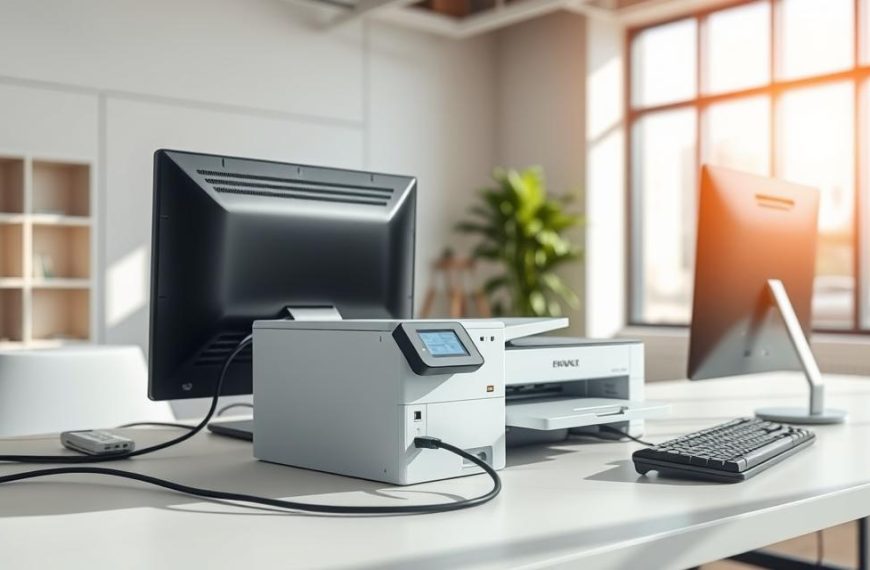In today’s computing environments, ensuring proper connectivity between a hardware device and a computer is essential. Many users face challenges when their peripherals fail to function as expected. This often stems from issues like improper recognition or system errors.
One common obstacle is the Code 45 error, which indicates that the system cannot detect the connected device. This error can disrupt workflows and hinder productivity. Addressing it requires a combination of hardware and software troubleshooting techniques.
This article provides a step-by-step guide to resolving connectivity issues. From physical checks to advanced system repairs, you’ll find actionable solutions to ensure seamless device integration. Stay tuned for detailed insights and expert tips.
Introduction to Hardware Device Connectivity Issues
Windows users often face difficulties when devices are not recognized by the system. One common issue is the Code 45 error, which indicates that the system cannot detect the connected hardware. This error can affect USB drives, external storage, and Bluetooth peripherals, causing significant disruptions.
The primary causes of this error include driver corruption (35% of cases), physical connection issues (25%), and system file errors (20%). Microsoft’s Device Manager plays a crucial role in identifying these errors, helping users pinpoint the root cause of connectivity problems.
When a hardware device connected to a computer fails to function, it can lead to delays in productivity and limited access to critical data. Understanding the causes and solutions for these issues is essential for maintaining seamless operations.
By leveraging tools like Device Manager, users can diagnose and resolve connectivity errors effectively. Addressing these challenges ensures that devices remain functional and workflows uninterrupted.
How Do You Reconnect a Hardware Device to Your Computer?
Effective troubleshooting starts with a systematic approach to device connectivity. When a peripheral fails to function, a structured process can help identify and resolve the issue. Below are the essential steps to ensure seamless reconnection.
Step 1: Disconnect and Inspect the Device
Begin by safely removing the hardware from your system. Improper disconnection can lead to data corruption or further problems. Once disconnected, inspect the device for visible damage. Check for frayed cables, bent pins, or other signs of wear.
Cross-testing is a useful method to isolate the issue. Try connecting the device to another computer or using a different cable. This helps determine whether the problem lies with the device or the original system.
Step 2: Check Ports and Cables
Examine the ports and cables for damage or debris. A faulty connection can prevent proper recognition. Clean the ports gently and ensure the cables are intact. If possible, test the ports with another device to confirm functionality.
For wireless peripherals, ensure the driver is up to date and the connection settings are correct. A simple restart computer can also refresh the system and resolve minor glitches.
Step 3: Reconnect the Device
Reconnect the hardware carefully, ensuring proper alignment with the port. Avoid forcing the connection, as this can cause damage. Once connected, verify the device status in Device Manager. Look for the message “This device is working properly.”
If the issue persists, consider reinstalling the driver or running the Windows Hardware and Devices Troubleshooter. These steps can address underlying software issues and restore functionality.
Understanding Code 45 Error in Device Manager
The Code 45 error is a common issue that disrupts device functionality. It appears in Device Manager when the system fails to recognize a connected peripheral. This error often displays the message, “Currently, this hardware device is not connected to the computer.”
To locate the error code, open Device Manager and navigate to the properties of the affected device. The device status section will provide details about the issue. This path helps users identify whether the problem is hardware or software-related.
The Code 45 error is often linked to registry corruption or outdated drivers. In some cases, it may also result from physical connection issues. Windows versions may present this error differently, so it’s essential to verify the specific message in your operating system.
Diagnosing the root cause involves checking both hardware and software components. Cross-testing the device on another system can help determine if the issue is localized. Understanding these factors ensures effective troubleshooting and resolution.
Fixing Code 45 Error: Step-by-Step Solutions
Resolving the Code 45 error requires a structured approach to ensure your system recognizes connected peripherals. Below are five effective solutions to address this issue and restore functionality.
Reinstall the Device Driver
Outdated or corrupted drivers often cause the Code 45 error. Begin by uninstalling the current driver. Navigate to Device Manager, locate the affected device, and select “Uninstall device.” Ensure you check the box to delete the driver software.
After uninstallation, restart your computer. Windows will automatically reinstall the driver. If the issue persists, download the latest driver from the manufacturer’s website and install it manually.
Run the Windows Hardware and Devices Troubleshooter
Microsoft’s built-in diagnostic tool can identify and resolve connectivity issues. Open the Settings menu, navigate to “Update & Security,” and select “Troubleshoot.” Choose “Hardware and Devices” and click “Run the troubleshooter.”
This automated process scans your system for problems and suggests fixes. Follow the on-screen instructions to complete the troubleshooting process.
Use System File Checker (SFC)
Corrupted system files can trigger the Code 45 error. The System File Checker tool scans and repairs these files. Open the Command Prompt as an administrator and type the following command: sfc /scannow.
Wait for the scan to complete. If any issues are found, the tool will attempt to repair them automatically. Restart your computer after the process finishes.
Run CHKDSK to Check Disk Errors
Disk errors can also cause connectivity problems. The CHKDSK utility checks your storage media for errors and fixes them. Open Command Prompt as an administrator and enter the command: chkdsk /f /r.
This process may take some time, depending on your disk size. Once completed, restart your computer and check if the issue is resolved.
Perform a DISM Scan
The Deployment Imaging Service and Management Tool (DISM) repairs the Windows image. Open Command Prompt as an administrator and type: DISM /Online /Cleanup-Image /RestoreHealth.
This scan ensures your operating system files are intact. After completion, restart your computer and verify if the Code 45 error is fixed.
| Solution | Tool/Command | Outcome |
|---|---|---|
| Reinstall Driver | Device Manager | Restores driver functionality |
| Run Troubleshooter | Windows Hardware and Devices Troubleshooter | Automates issue detection and repair |
| Use SFC | sfc /scannow | Repairs corrupted system files |
| Run CHKDSK | chkdsk /f /r | Fixes disk errors |
| Perform DISM Scan | DISM /Online /Cleanup-Image /RestoreHealth | Repairs Windows image |
“Addressing the Code 45 error requires a combination of hardware and software solutions. A systematic approach ensures long-term resolution.”
Updating Device Drivers for Better Connectivity
Keeping your system running smoothly often depends on updated drivers. Outdated or corrupted drivers can lead to connectivity issues, errors, and reduced performance. Regular updates ensure compatibility with the latest Windows versions and enhance system stability.
Manual updates involve visiting the manufacturer’s website to download the latest device driver. This method is reliable but time-consuming. For automated solutions, tools like Driver Easy simplify the process by scanning and updating drivers with a single click.
Version compatibility is crucial, especially for legacy hardware. Always verify that the driver matches your system’s specifications. Scheduled maintenance, such as monthly checks, helps prevent issues before they arise.
After updating, verify the changes in Device Manager. Look for the message “This device is working properly.” This step ensures the update was successful and the device is functioning as expected.
“Regular driver updates are a proactive way to maintain system performance and avoid connectivity issues.”
Checking and Repairing Faulty Hardware
Identifying and resolving hardware issues is critical for maintaining system performance. Diagnostic tools like CHKDSK are essential for validating the integrity of your disk. These tools help detect and repair errors that could lead to system failures.
Interpreting CHKDSK error reports is a key step in troubleshooting. The command prompt provides detailed logs that highlight issues such as bad sectors or file system corruption. Understanding these reports allows for targeted repairs.
Before initiating any repairs, always back up your data. This precaution ensures that critical information is safe in case of unexpected problems. Use reliable backup solutions to safeguard your files.
Physical component testing is another crucial aspect. Inspect connectors, cables, and ports for damage. Cross-testing with other systems can help isolate the issue. Replace damaged components promptly to avoid further complications.
When replacing connectors or cables, ensure compatibility with your system. Use high-quality replacements to prevent recurring issues. Regular maintenance and timely replacements extend the lifespan of your hardware.
“Proactive hardware checks and repairs are essential for preventing system downtime and ensuring long-term reliability.”
Conclusion
Addressing connectivity issues requires a layered approach, combining physical checks with software diagnostics. Start by inspecting the device and its connections, ensuring no visible damage or debris. Cross-testing on another computer can help isolate the problem.
For persistent issues, use Windows tools like Device Manager or the Hardware Troubleshooter. These tools automate diagnostics and suggest fixes. Regular maintenance, such as updating drivers and cleaning ports, prevents recurrence.
If the issue remains unresolved, escalate by consulting technical support or replacing faulty components. Always verify the final connection status in Device Manager to ensure the fix is successful. A systematic approach ensures long-term reliability and seamless device integration.












